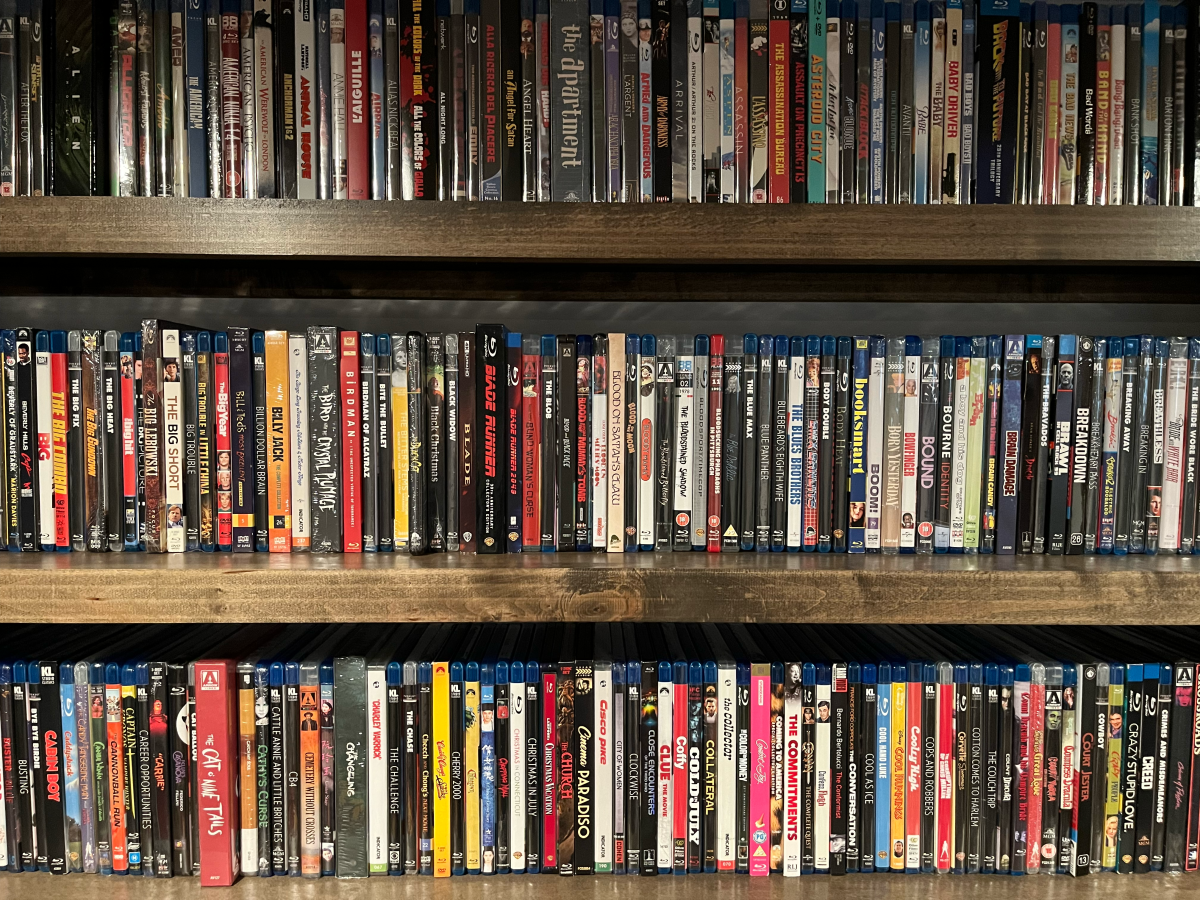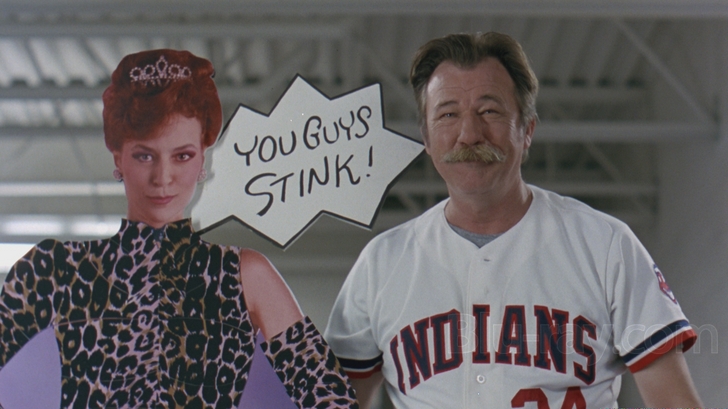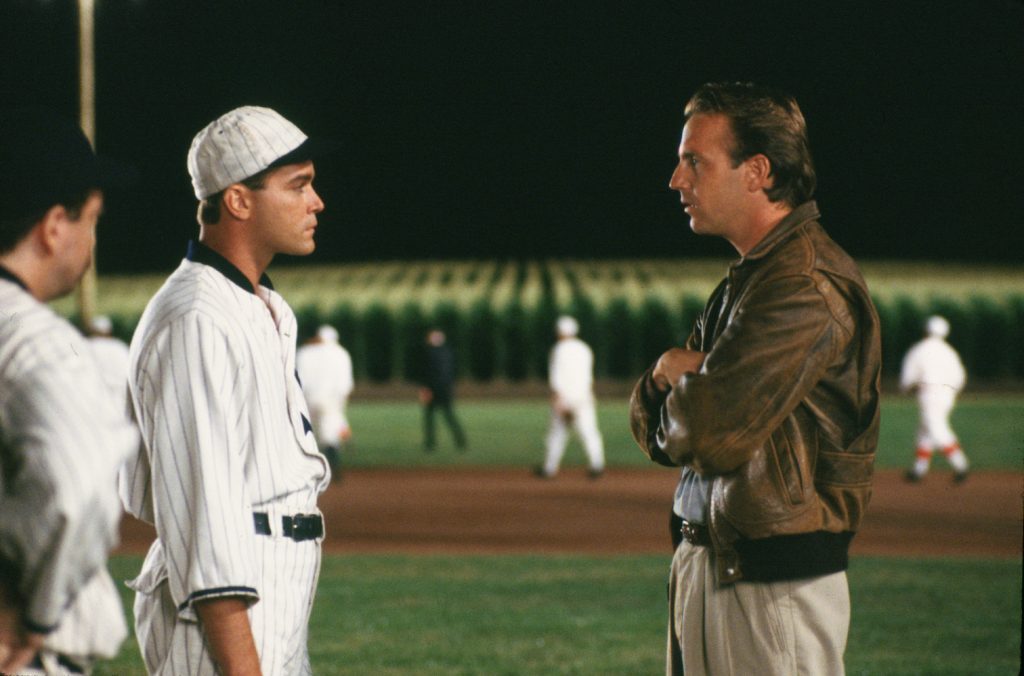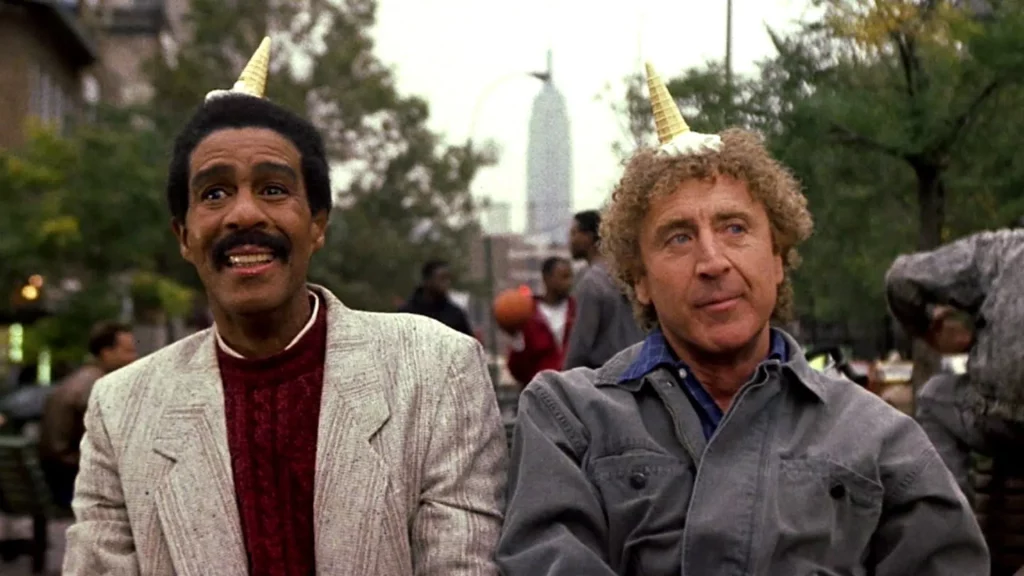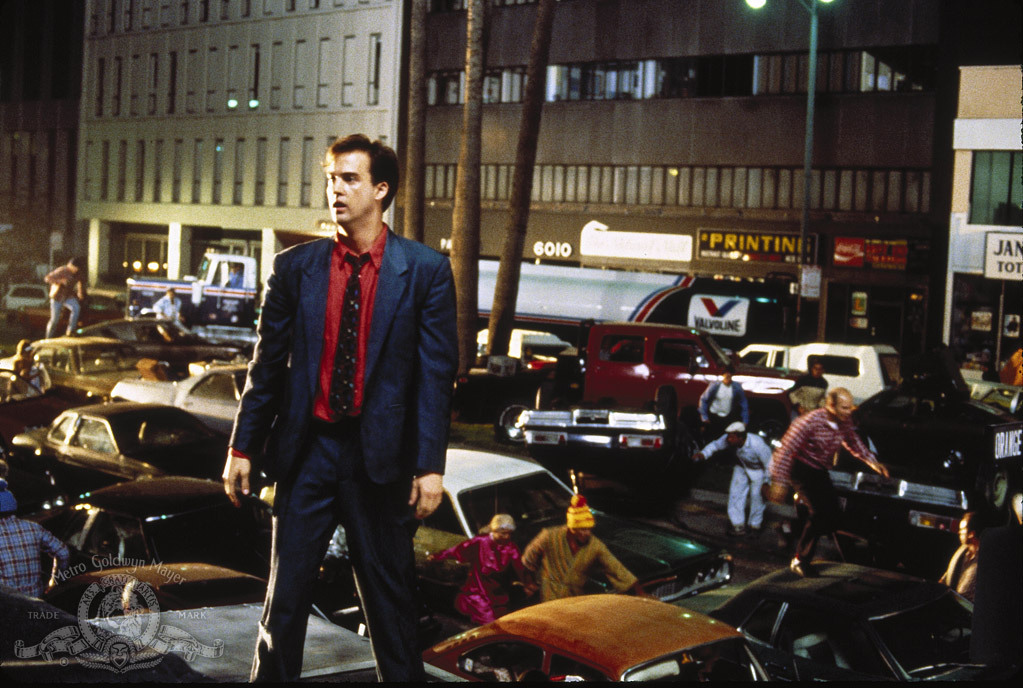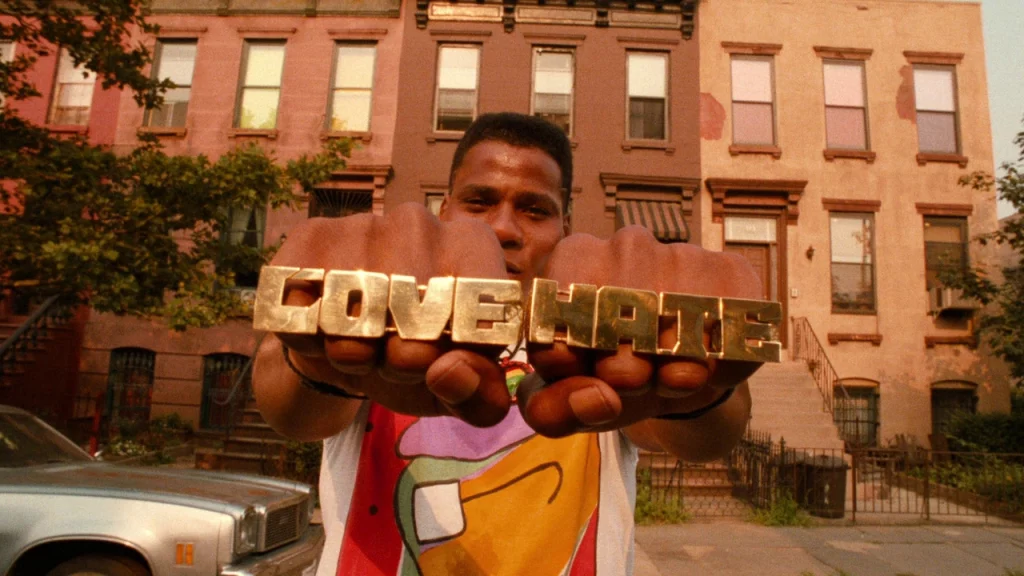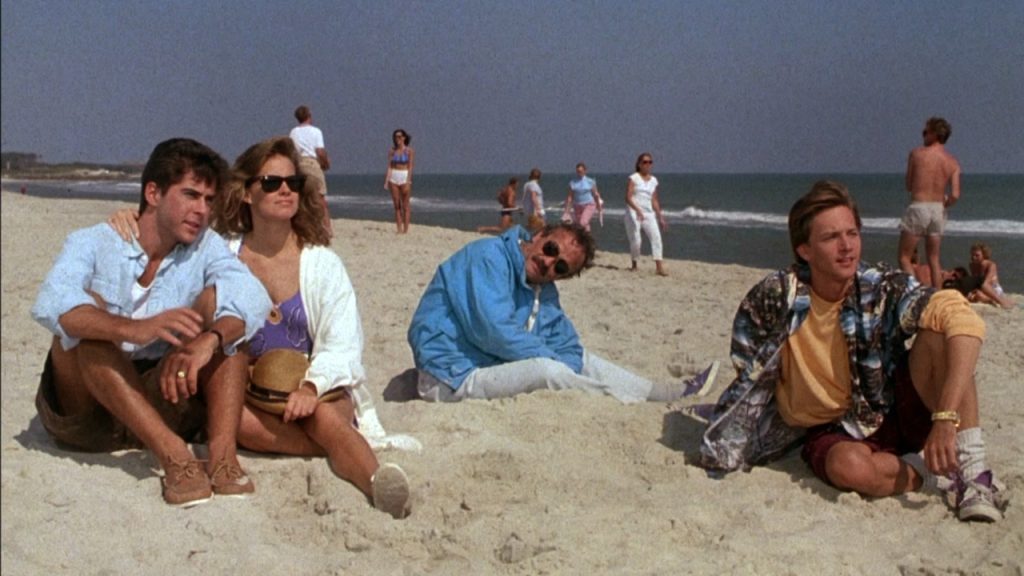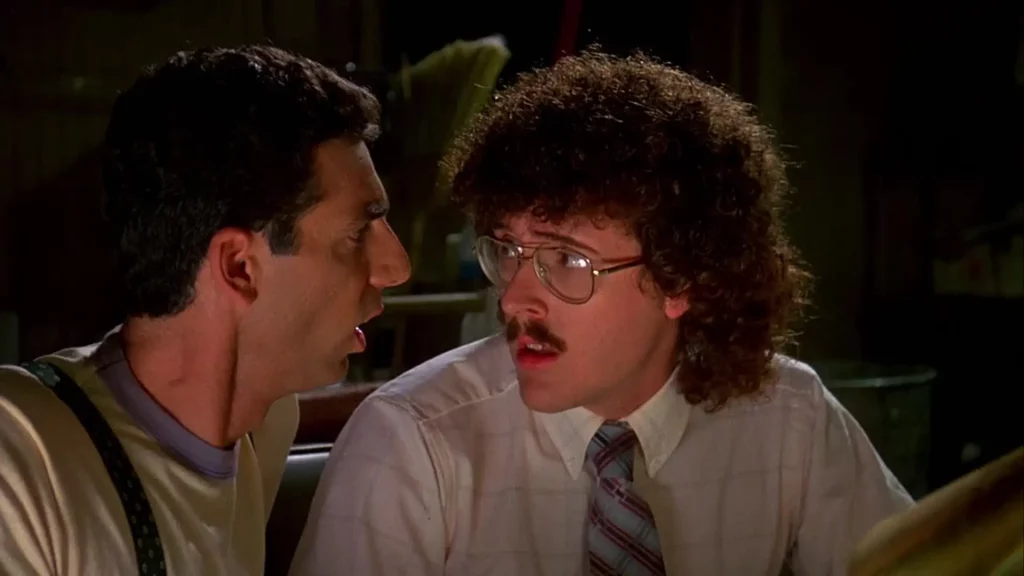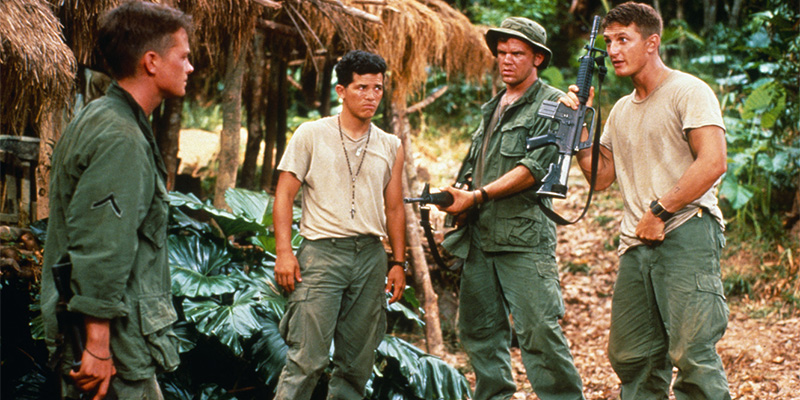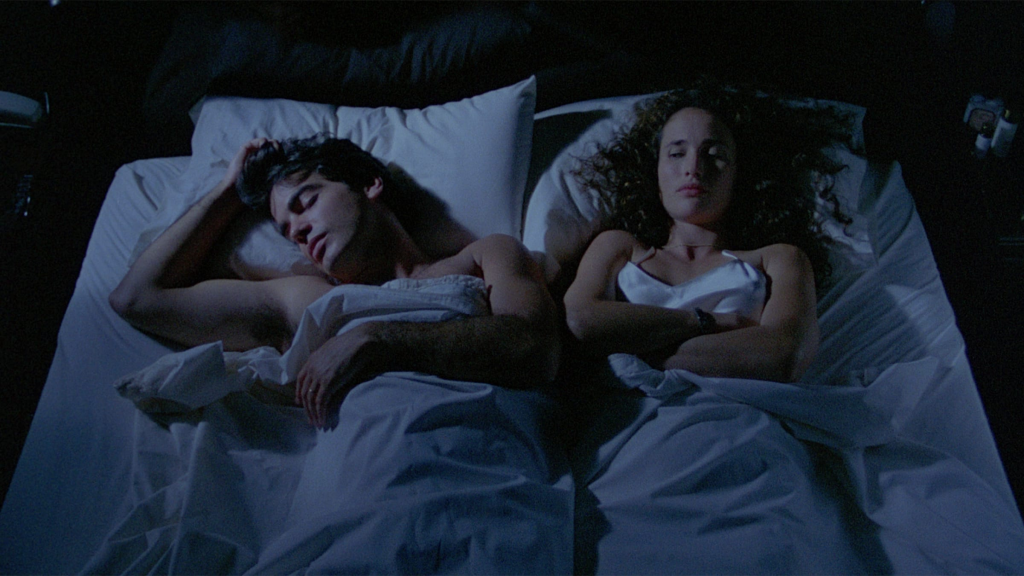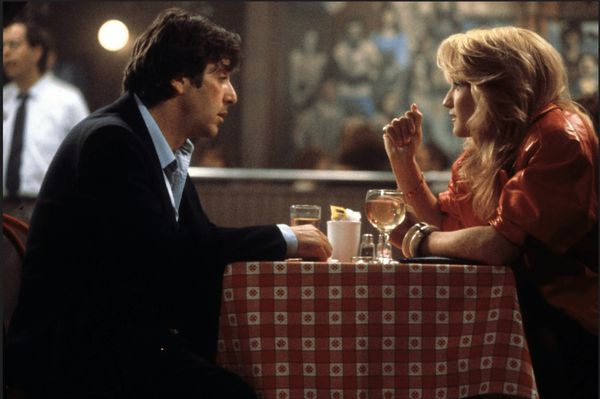Continued from Part 1 / Part 2
On the last episode of Only on DVD… Universal forced the theaters to reconsider he theatrical release window when it released Trolls: World Tour (2020) directly to VOD. The idle theaters had lost their leverage during the time of the COVID pandemic. In Part 2, I suggested that Universal CEO Jeff Shell only had to change consumer behavior to rewrite the theatrical release playbook. That’s because, legally, the studios could do whatever they wanted as long as the gambit paid financial dividends for their corporate ownership.
A Hollywood Anti-Trust Primer
I say “legally” because once upon a time there could have been a legal challenge to Universal’s day-and-date release strategy. Since I love backstory, let’s rewind all the way back to the silent era when the Federal Trade Commission first began investigating the film companies for violations of the Sherman Antitrust Act of 1890. The major film studios produced the movies, printed and processed the film, distributed the finished prints, and owned many of the theaters in which the movies were shown. Under Sherman, this vertical business integration amounted to a de facto oligopoly (a business dominated by a small number of 800 lb. gorillas). The U.S. Justice Department couldn’t make their case until 1938, at which point they named the Big Five (Paramount, MGM, WB, 20th Century Fox, and RKO) and the Little Three (Universal, Columbia, and UA) as defendants. The case was settled in 1940 in a New York district court with a consent decree that required studio compliance by 1943 with certain conditions that limited the practices of block booking and blind buying.
Block booking: the licensing of motion pictures for exhibition in a block or group, with the licensee (the independent theater chain) being required to take an entire group of films or none at all. The book would generally include one desired feature along with B-grade features and shorts to pad the total.
Blind buying/booking: the independent theater chain had to schedule films based on the studio’s description alone. The studio would not provide an actual print for preview.
When studios didn’t voluntarily comply, the Society of Independent Motion Picture Producers (SIMPP) filed a lawsuit against Paramount’s United Detroit Theatres. Hollywood luminaries Mary Pickford, Charles Chaplin, Walt Disney, Alexander Korda, Orson Welles, David O. Selznick, Samuel Goldwyn, and Walter Wanger formed SIMPP to “advance the interests of independent producers.” The suit forced the Justice Department to resume prosecution of the original consent decree of which the studios were found non-compliant. At best, they merely tried to disguise their problematic business practices with larger blocks of films. Their best effort came when independent theaters begrudgingly agreed to an increase in block size from 5 films to 12 in exchange for the ability to decline to exhibit a film based on quality or content.
SIMPP’s letter to the Attorney General’s office is well worth a read if you crave more detailed insight into Hollywood’s anti-competitive business model.
The case reached the Supreme Court in 1945. In United States vs. Paramount Pictures, Inc. (1948), the court ruled against the studios 7-1. William O. Douglas delivered the “incontestable” conclusion that the studios had engaged in “bald efforts to substitute monopoly for competition.” The court rejected the notion that block booking was an essential component of their copyright. The fallout from the decision forced the studios to divest of their exhibition chains, which caused a dramatic increase in independent theaters and largely neutered the Hays Production Code. Formally codified in 1934 (after being largely ignored for seven years) and enforced by the rigid Production Code Administration’s public relations officer Joseph I. Breen, the self-adopted industry guidelines for acceptable motion picture content required each film to receive a formal MPPDA (Motion Picture Producers and Distributors of America) seal of approval. Among his many deeds in the name of Catholic decency, Breen infamously transformed Betty Boop from a flapper into an old-fashioned housewife.
The decentralization of the exhibition branch increased the number of independently owned and operated movie houses, and these “art house” theaters could exhibit foreign and independent films that fell outside the Production Code’s jurisdiction. Until this point, the studios had used their control over exhibition to prevent the import of foreign cinema. An influx of movies that challenged the Code’s strictly enforced gender roles and social prejudices flooded into the American market. The final nail in the Code’s coffin was the 1952 Supreme Court case, Joseph Burstyn, Inc. vs. Wilson, in which the Court ruled that movies were entitled to first amendment protection, preventing the New York State Board of Regents from banning Roberto Rossellini’s L’Amore (1948).
The Paramount ruling reconfigured the industry, ending the “golden age” of the studio system. With parallel ascendance of the medium of television, the majors mistakenly believed (in the long run at least) that the lack of exclusive theatrical arrangements would devalue their existing film libraries. Paramount, 20th Century Fox, and Warner Bros. sold or leased their catalogs to other companies for TV exhibition. Disney saw things differently, instead forming Buena Vista Film Distribution to become a holding company and in-house distribution unit. This paved the way for the construction of Disney’s theme parks and extremely profitable leap into television programming.
Dixie Cup Disposability
I spoke to Anthony L’Abbatte, Preservation Manager at the George Eastman Museum, about the studios’ treatment of their back catalog. He suggested that Disney’s perspective differed because Walt Disney considered animation a more timeless medium, unlike how other studio executives and the moviegoing public viewed film in general. “Once you saw a movie,” he said, “you probably weren’t going to see it again. Studios cranked out 40-50 feature films a year. There was always new product. They were like Dixie cups. Use it once and throw it away. Unless it was a really popular title that they’d reissue every eight or so years, but that was a rare exception.” It wasn’t until the 1960s that a more concerted effort began to preserve old prints by converting them to safety stock for storage. Consider that only 20 years prior, companies like Universal were burning their silent nitrate prints to fuel on-screen fires in films produced during the 30s and 40s. The money men in charge of companies like Universal and RKO couldn’t see a future in which these films were more valuable than kindling – really combustible kindling – but kindling, nonetheless.
In 2022, we witnessed a return to this Dixie cup mentality that also simultaneously brought U.S. vs. Paramount (1948) back into the conversation. Even before the pandemic further shifted viewing habits toward the small screen, a multitude of streaming services began to pop up to service couchbound demand. Here’s a list of the major launches during this period:
Apple TV+ (November 1, 2019)
Disney Plus (November 12, 2019)
HBO Max (May 27, 2020)
Peacock (July 15, 2020)
Paramount Plus (March 4, 2021)
Though methods of operation differ among the participants, the general business model for each is to provide unique, premium content to lure new subscribers and enough depth to maintain subscriber numbers. That last part is the bit everyone’s still trying to figure out. According to The Wall Street Journal, half of the new subscribers to Disney+ who joined for Hamilton (2020) unsubscribed within six months. The same statistics held for HBO Max and Wonder Woman 1984.
Viewers tethered to their homes and scrubbing grocery items with alcohol wipes readily adapted to the streaming convenience – devouring content and moving on to the next service like locusts. This includes content fueled by studios’ back catalogs and newly produced TV series and movies, many of which made their debut on streaming – not on broadcast TV or in theaters.
It wasn’t until HBO Max, with little warning, purged dozens of titles from their service in August of 2022 that many of these new viewers became aware of the hazards of plenty. The purge included 20 original HBO series, 2 movies, and a bunch of Cartoon Network programming – including Infinity Train, Generation Hustle, Close Enough, and The Not-Too-Late Show with Elmo just to name a few. People enjoying the shows at their own pace were just out of luck. Only a few had accompanying physical media releases; many existed only on HBO Max. I know it seems obvious, but the fact bears repeating: the only way you’ll ever be sure to have access to the shows you love is by owning a physical copy. Unfortunately, this is becoming increasingly more difficult in the age of streaming.
Viewers looked to the streaming overlords and asked them “Why?” To quote Tom Hanks’ Joe Fox in You’ve Got Mail (1998), “It’s not personal.” To which the public responded according to Meg Ryan’s Kathleen Kelly, “It’s personal to a lot of people. And what’s so wrong with being personal, anyway?”
Like I said in a prior Only on DVD episode, the entertainment business is indeed all business. Heartfelt pleas of devoted fans don’t keep the servers running. Keeping titles on a streaming platform isn’t free. The parent company pays residuals to the creators, cast, and crew. Once a show’s residual cost exceeds its value in viewer engagement (a constantly sliding variable), that title disappears. It becomes that little paper Dixie cup. And as a purely digital enterprise, it doesn’t even have the marginal value of fueling new on-screen fires for early talkies.
Without a push to distribute physical media, I asked Anthony L’Abbatte, what could be the hazards of a streaming-only environment from the perspective of a preservationist? Was there a chance, however unlikely, that we could lose some of this content forever? He paused for a moment before agreeing that parallels were beginning to form between now and the 1920s and 30s, when studios discarded thousands of original film elements. “If they’re not on top of a good a migration program and constantly transferring properties to improved hard drives and storage solutions, some of these films might disappear. It could be a problem going forward.”
Arriving Again at the Start
If you’ve been putting the pieces together, this is where you might begin to ask questions. The questions might not be fully formed because, by and large, we’re film fans, moviewatchers, and cinephiles. We look at movies through the lens of passionate appreciation. When I first started digging into how the pandemic affected the business of film distribution, I wanted to know how the production studios had so easily avoided the 1948 Paramount decision. They seemed to be once again creating a vertically integrated business model with their own streaming services standing in for theatrical exhibition – the exhibition tier that had been stripped of them in 1948.
When theater chains threatened to boycott Universal’s films after the studio tried to narrow the release window to 30 days, they had the Supreme Court decision standing silently in their corner, looking menacing and dipping its resin-laden fists into a bucket of broken glass, a la Tong Po (Michael Qissi) in Kickboxer (1989). When they released Trolls: World Tour during the pandemic, Universal had the overwhelming support of parents who’d run out of quarantine crafting activities. This time, however, U.S. vs. Paramount (1948) sat on a stool, reading the trade papers in search of employment, and shrugged. The U.S. Department of Justice had formally filed a motion to terminate the United States vs. Paramount ruling on November 22, 2019, stating that it was “unlikely the Defendants can reinstate their cartel.” Though vehemently opposed by the theater chains, the Independent Cinema Alliance, and independent filmmakers; the Court granted the motion without contestation or much publicity. Under the cover of night, aka the pandemic, the DOJ had eradicated the safeguard assuring the continued viability of our brick-and-mortar theaters. We don’t know if streaming platforms would have been deemed a violation of the Paramount ruling. Objectively speaking, however, there’s more than just a passing resemblance. In 2022, Paramount or Netflix or Warner Bros. is allowed to produce a movie and then distribute that movie directly to its own streaming service for exhibition. That movie may not appear anywhere else, not even on physical media.
I don’t want to suggest that theaters will be shuttered by next Tuesday. The big studios still need theaters, at least for now, but the future’s a little muddier. As consumer behavior shifts and the current trends continue, fewer and fewer movies will appear in theaters. Anything other than the largest tentpole blockbusters or Oscar-seekers could opt instead for streaming premieres. The movies will live for a time on a particular service and then, one day, they won’t. Will we still see physical DVD releases for movies that only ever existed on the Internet? I asked this very same question to Anthony L’Abbatte at the end of our conversation. “It’s maybe too new to tell,” he said. “The public will likely be losing physical media because the studios want the most control over the content.”
I’ll crack open a few recent case studies and play prognosticator in Part 4: What We Learned from Irwin M. Fletcher and Benoit Blanc.
I would like to thank Anthony L’Abbatte, Preservation Manager at the George Eastman Museum for taking time to field my questions. Each year the Eastman Museum plays host to The Nitrate Picture Show, four days of beautiful nitrate prints projected onto the big screen at the Dryden Theatre.

